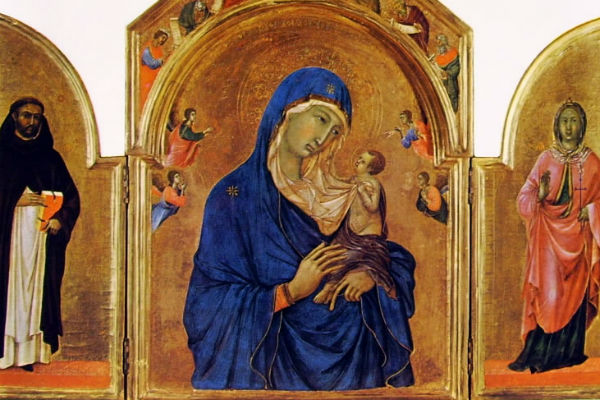How do you get the ultramarine blue? #Sapevatelo

Every week a curiosity, a news on the topics covered by National Geographic. Come back to visit us and do not miss the appointment with Sapevatelo on Nat Geo

The Virgin with Child and Saints (1315 circa) by Duccio Boninsegna exemplifies the use of the ultramarine blue for the dress of the Madonna, characteristic of the Middle Ages. (National Gallery, London)
In the late Middle Ages, one of the most vaunted and precious pigments appeared in the workshops of European artists, destined to make a fundamental contribution to the splendours of Western painting: the ultramarine blue. The story of its origin and its importance is told by Philip Ball in his book between art, history and chemistry entitled "Color, A biography" (BUR editions). "It would not be an exaggeration to say that the relevance of blue in the tradition of pictorial art was due both to technical innovation in pigment manufacture and to theoretical considerations," says Ball.
The ingredient at the base of the ultramarine blue is the lapis lazuli (literally blue stone), a semiprecious stone also known before the affirmation of the overseas, but which was difficult to transform into color and therefore ended up being a substitute for the most manageable, but not as aesthetically esthetic, azurite. For this reason, the color historian still recalls, "milled lapis lazuli was not found in any Egyptian, Greek or Roman artwork".
The technique to produce a light blue color
superior quality overseas from lapis lazuli would have been a medieval invention that Arthur P. Laurie, an expert on pictorial materials of the British Royal Academy in the 50s and 60s of the last century, hypothesized was introduced into Western art around 1200. Lapis lazuli it is a rare stone and the only source of supply during the entire Middle Ages were the Badakshan quarries in Afghanistan. The spectacle of their magnificent color also enchanted Marco Polo: "And there, in another mountain, where the light blue is drawn, and it is the best and the finest in the world", wrote the Venetian.
Who discovered the method to extract the pigment from the debris of powdered lapis lazuli is not known. The main difficulty, Ball recalls, is to separate the lazurite from the impurities. The procedure, extraordinarily complicated and lebiorous, is however described in a particularly accurate manner by Cennino Cennini. Accurate, but still not fully understood. "It is amazing that this method worked - concludes Ball - I give it that it is not completely understood even today".
Get your post resteemed over 90000+ followers and get upto $21+ value Upvote. Your post will skyrocket and give you maximum exposer.
See our all pakages at: https://tinyurl.com/whaleboostup
Great job.
Also visit the below link.
https://steemit.com/music/@dhitalajay/passage-the-power-of-music